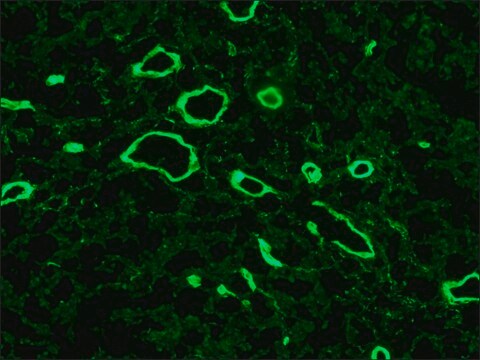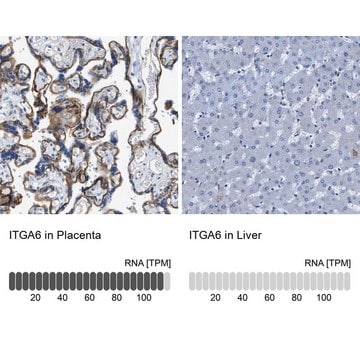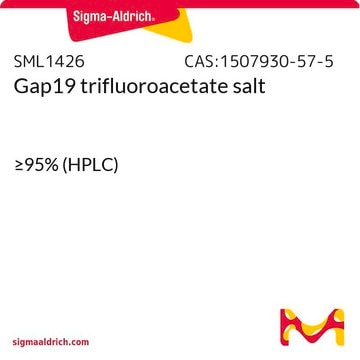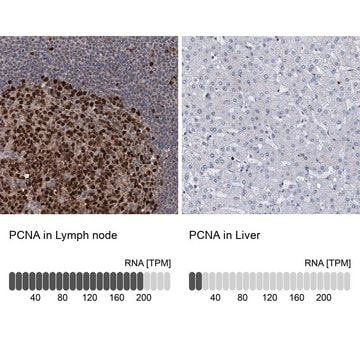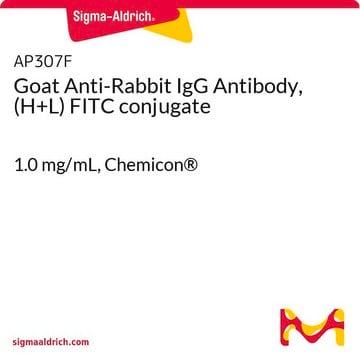Opis ogólny
Integrins are a family of dimeric, transmembrane proteins that mediate cell-cell and extracellular matrix adhesion. Signals transduced by integrins play a role in many biological processes, including cell growth, differentiation, migration and apoptosis. The integrin family is composed of at least 15 alpha and 8 beta subunits that may form over twenty different alpha-beta non-covalently bound dimeric combinations on the cell surface. The alpha subunits all have some homology to each other, as do the beta subunits. Both of the subunits contribute to the binding of the ligand. Integrin alpha subunits contain seven weak sequence repeats in the N-terminal region, which may be important in ligand binding, and have been predicted to fold cooperatively into a single beta-propeller domain with seven beta-sheets. In normal tissue, Integrin alpha-6/beta-1 is a receptor for laminin on human platelets. Integrin alpha-6/beta-4 is a receptor for laminin in epithelial cells and it plays a critical structural role in the hemidesmosome. Various disease states involving epithelial cells have been shown to be associated with alterations in alpha 6 integrin-containing heterodimers.
Specyficzność
Directed against the Cdw49f-antigen, 120kDa, (GP Ic or VLA-6 alpha-chain), which can form distinct complexes with either the CD29-antigen (GP 11a or VLA beta-chain), resulting in the VLA-6 (alpha-6 beta-1) complex, which is expressed on human platelets, or with the beta-4 integrin resulting in the alpha-6 beta-4 complex which is expressed on various human epithelial cells. The monoclonal antibody reacts with platelets, megakaryocytes, T lymphocytes and common Acute Lymphoblastic Leukemia cells (alpha-6 beta-1). In immunohistology the monoclonal antibody reacts with epithelial cells of a variety of tissues, peripheral nerves, microvascular endothelial cells, placenta cyto- and syncytotrophoblasts. Platelet VL-6 functions as a laminin receptor and platelet adhesion to laminin is inhibited by GoH3.
Immunogen
Mammary tumor cells from BALB/c mice.
Zastosowanie
Detect Integrin α6 using this Anti-Integrin α6 Antibody, clone NKI-GoH3 validated for use in FC, IH.
Flow cytometry: 1:10
Immunohistology on frozen tissue sections: 1:25-1:50
Immunoprecipitation (Sonnenberg, et al. 1990)
Inhibition of laminin binding:40μg/ml.
Optimal working dilutions must be determined by end user.
Research Category
Cell Structure
Research Sub Category
Integrins
Postać fizyczna
Format: Purified
Protein A Purified mouse immunoglobulin in 20 mM sodium phosphate, 250 mM NaCl, pH. 7.6, with 0.1% sodium azide as a preservative.
Protein A purified
Przechowywanie i stabilność
Maintain for 1 year at 2–8°C from date of shipment. For maximum recovery of product, centrifuge the original vial after thawing and prior to removing the cap.
Komentarz do analizy
Control
Human intestine tissue
Inne uwagi
Concentration: Please refer to the Certificate of Analysis for the lot-specific concentration.
Informacje prawne
CHEMICON is a registered trademark of Merck KGaA, Darmstadt, Germany
Oświadczenie o zrzeczeniu się odpowiedzialności
Unless otherwise stated in our catalog or other company documentation accompanying the product(s), our products are intended for research use only and are not to be used for any other purpose, which includes but is not limited to, unauthorized commercial uses, in vitro diagnostic uses, ex vivo or in vivo therapeutic uses or any type of consumption or application to humans or animals.
This page may contain text that has been machine translated.

